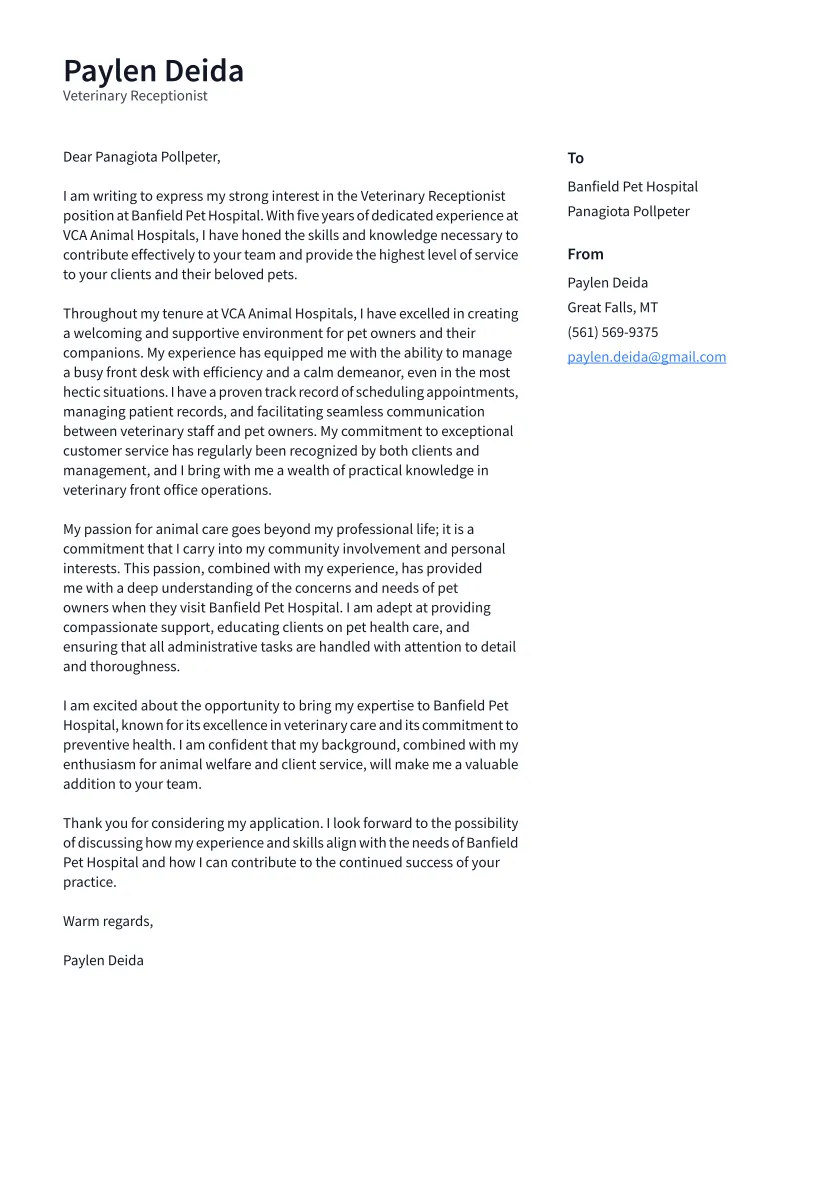Understanding the Importance of a Vet Receptionist Cover Letter
A well-crafted cover letter is your first impression on a potential employer, and for a veterinary receptionist position, it’s especially crucial. It’s more than just a formality; it’s your opportunity to showcase your personality, skills, and passion for animal care before they even look at your resume. The cover letter acts as a gateway, offering a glimpse into your communication style, work ethic, and genuine interest in contributing to a veterinary practice. It sets the tone for your application, providing context to your resume and highlighting why you are the perfect candidate for the role. A strong cover letter can significantly increase your chances of landing an interview by making you stand out from the crowd and demonstrating your genuine enthusiasm for the position and the veterinary field.
Key Components of a Strong Cover Letter
Several key components form the foundation of an effective veterinary receptionist cover letter. These elements work together to present a cohesive and compelling narrative, highlighting your suitability for the role. First and foremost, you must have clear contact information and a professional greeting. Secondly, skillfully highlight your relevant skills and experience, emphasizing those that align with the job description. Thirdly, your passion for veterinary care must shine through. Your cover letter should be tailored to the specific job, which shows that you are serious about the position and that you have taken the time to understand what the practice needs. Use precise language and avoid jargon or overly complex sentence structures. Proofread thoroughly for any grammatical errors or typos.
Contact Information and Professional Greeting
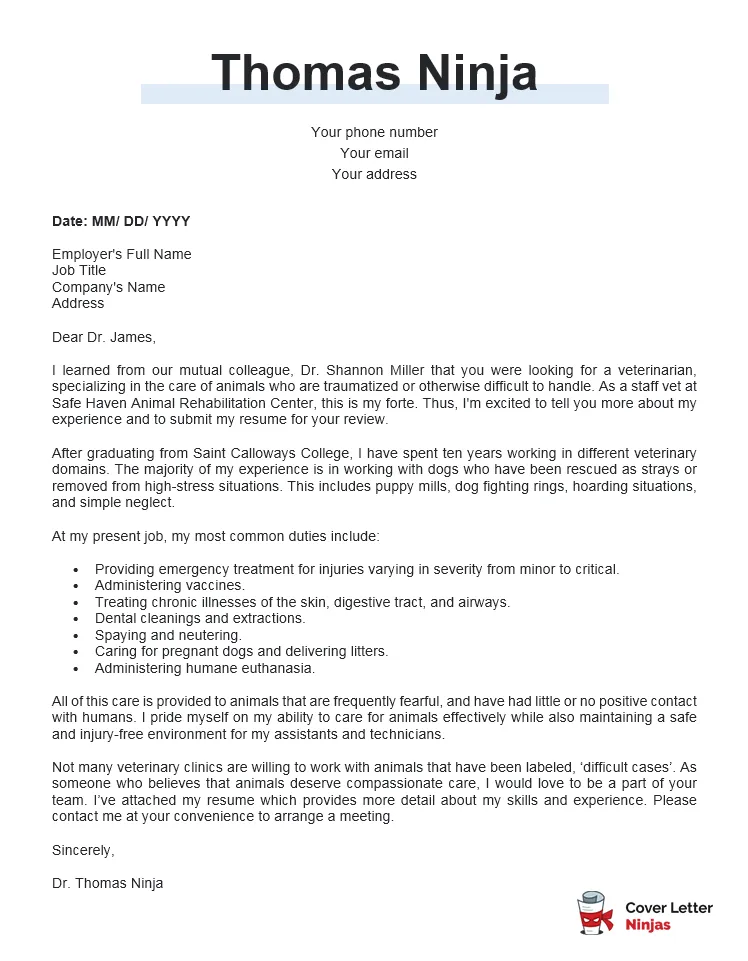
Start with your complete contact details, including your name, phone number, email address, and possibly your LinkedIn profile URL. This section ensures the hiring manager can easily reach you. Following this, include the date and the recipient’s contact information (if known), such as the hiring manager’s name and the veterinary practice’s address. The greeting should be professional; using “Dear Mr./Ms./Dr. [Last Name]” is preferable. If you don’t know the hiring manager’s name, use a general greeting like “Dear Hiring Manager” or “Dear [Veterinary Practice Name] Team.” Avoid casual greetings such as “Hey” or “Hello” to maintain professionalism. Make sure you use professional email address.
Highlighting Your Relevant Skills and Experience
This is your chance to shine by showcasing the skills and experience most relevant to the veterinary receptionist position. Focus on those mentioned in the job description and tailor your examples to align with the practice’s needs. Common skills to highlight include strong communication skills (both verbal and written), excellent organizational abilities, proficiency in scheduling appointments, handling phone calls, managing client records, and handling payments. If you have experience with practice management software (e.g., AVImark, Cornerstone, or similar), be sure to mention it. Don’t just list skills; provide specific examples of how you’ve used them effectively in previous roles. If you have experience in a high-volume environment or managing difficult client interactions, showcase these abilities. Highlight all of your skills and show why you’re a great fit.
Showcasing Your Passion for Veterinary Care
Veterinary practices seek employees who are genuinely passionate about animal welfare. Infuse your cover letter with your love for animals and your commitment to supporting their well-being. Express your interest in helping pets and their owners. This will make you stand out from other applicants. If you have volunteered at an animal shelter, fostered pets, or have personal pets, mention this to show your genuine care and empathy. Explain your understanding of the importance of client education, patient comfort, and the overall positive experience for both animals and their owners. Showing a passion for veterinary care is a key part of the job.
Tailoring Your Cover Letter to the Specific Job
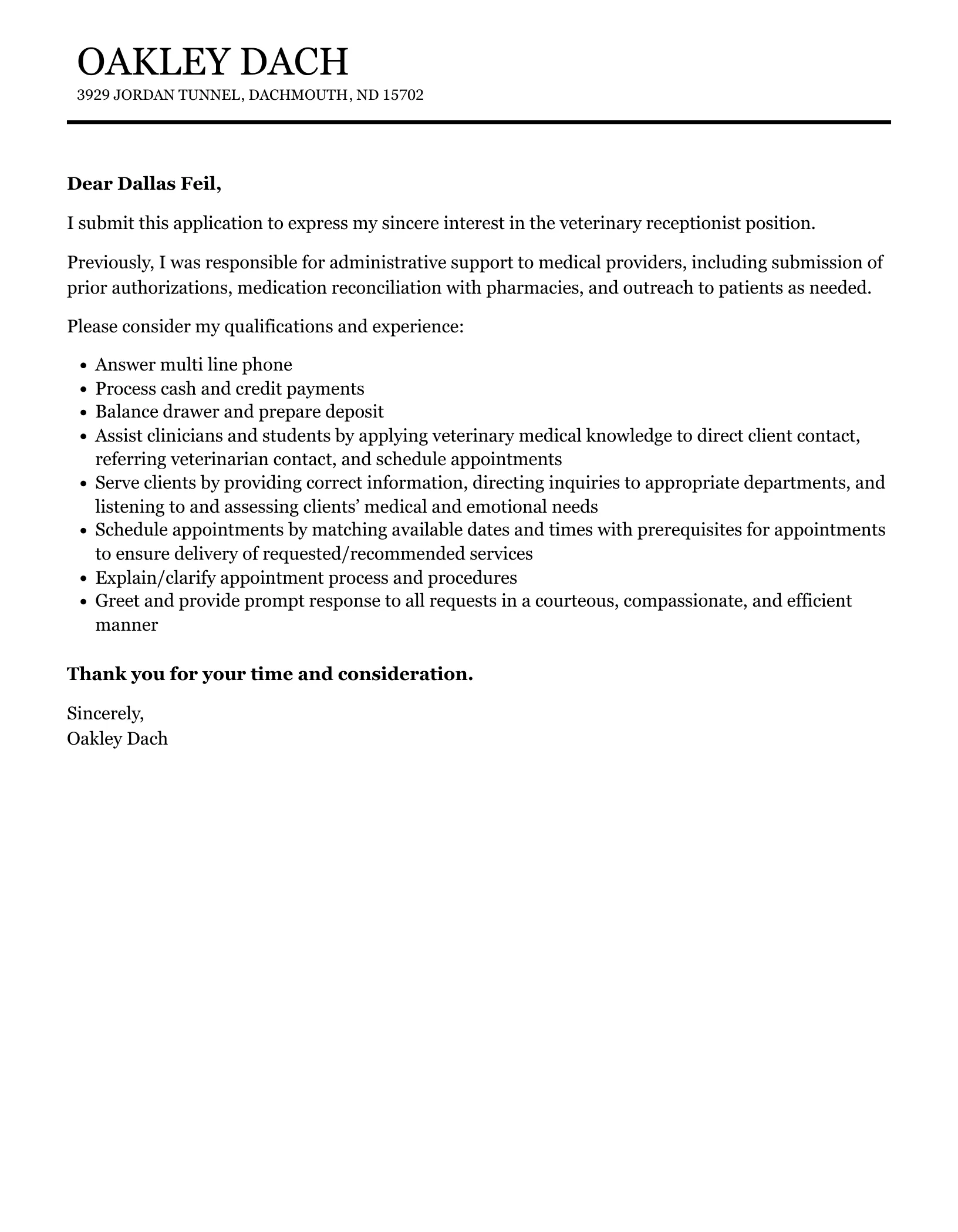
Generic cover letters are easily spotted and often disregarded. Spend time customizing each cover letter to the specific veterinary practice and job posting. Start by thoroughly reading the job description and identifying the key requirements and the practice’s values. Research the practice’s website, social media, and online reviews to gain a better understanding of their culture, services, and mission. Address how your skills and experience align with their specific needs. Use keywords from the job description naturally throughout your letter. Demonstrate that you’ve done your homework and that you’re genuinely interested in working at that particular practice. Show that you are enthusiastic to work for the company.
Researching the Veterinary Practice
Before writing your cover letter, conduct thorough research on the veterinary practice. This research will enable you to tailor your letter effectively and demonstrate genuine interest. Visit the practice’s website to learn about their services, philosophy, and team. Explore their social media profiles to get a sense of their culture and values. Read online reviews to understand client experiences. Look for any recent news or initiatives related to the practice. Mention specific details in your cover letter that show you’ve taken the time to learn about the practice. This shows you want to be part of the team.
Addressing the Needs of the Practice
Every veterinary practice has its own unique needs and challenges. Reflect on these issues when writing your cover letter. You should identify what the practice is looking for in a new employee. Review the job description and try to uncover any unstated needs or priorities. For instance, a practice that emphasizes client education may value strong communication skills. If a practice is experiencing staffing challenges, highlight your ability to work independently and efficiently. Address how your skills and experience can help the practice meet its goals and improve its operations. Addressing the needs of the practice shows the employer that you understand what is needed in a receptionist.
Quantifying Your Achievements
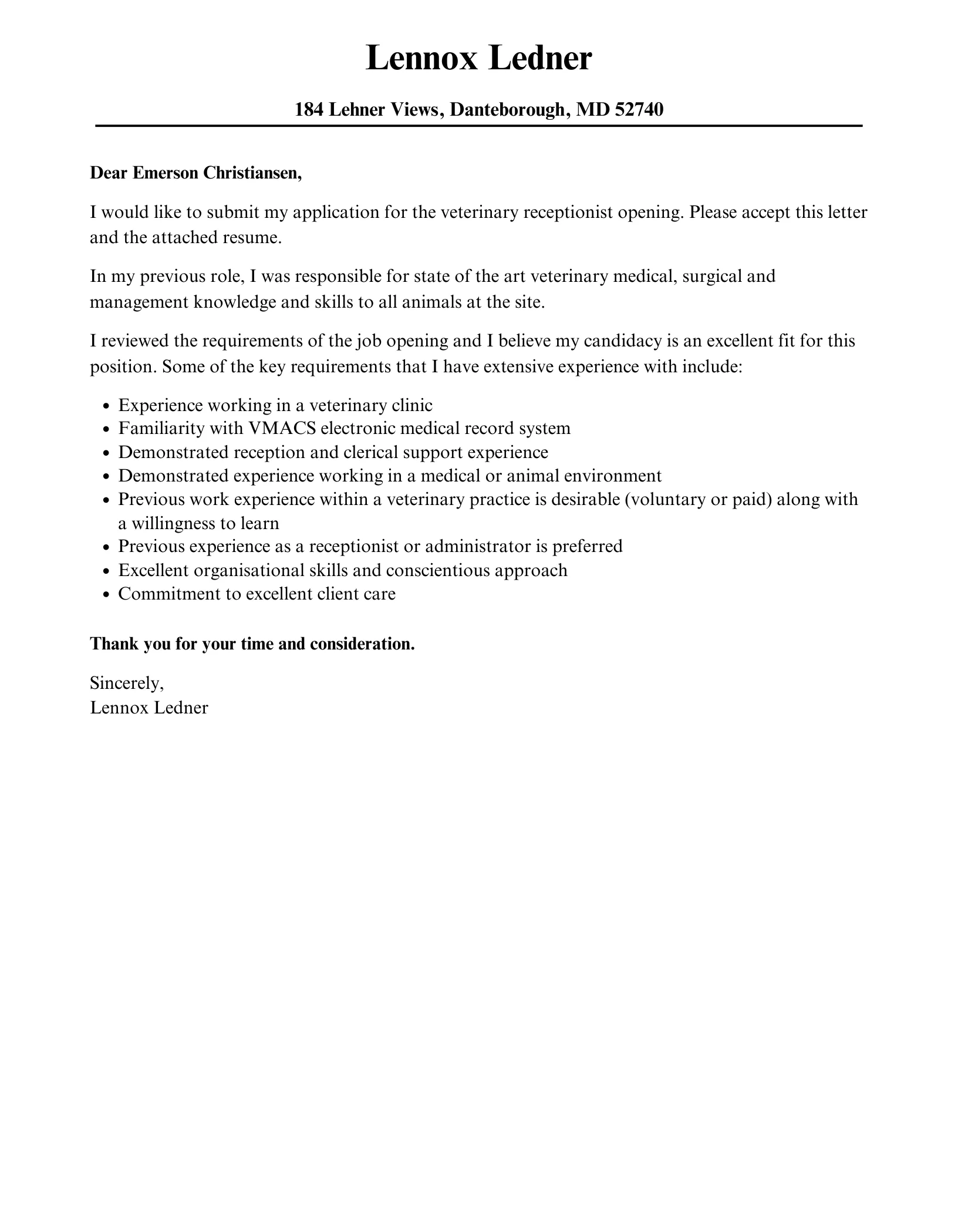
Instead of simply listing your responsibilities, quantify your achievements whenever possible. This adds credibility and impact to your cover letter. Provide specific data to demonstrate your successes. For example, instead of saying “Managed phone calls,” you could say, “Managed an average of 50 phone calls daily, ensuring all clients received prompt and helpful service.” If you improved efficiency in a previous role, mention the percentage or time saved. If you helped increase client satisfaction, provide the percentage improvement based on surveys or feedback. Quantifying your achievements shows the hiring manager the real value that you can bring to the practice.
Providing Specific Examples
Use specific examples to illustrate your skills and experiences. Instead of saying “I have excellent communication skills,” describe a situation where you effectively communicated with a difficult client or explained a complex medical procedure in simple terms. Use the STAR method (Situation, Task, Action, Result) to structure your examples. Briefly describe the situation, outline the task you faced, explain the actions you took, and highlight the positive results. Providing concrete examples makes your claims more believable and memorable. This enables the hiring manager to clearly visualize your capabilities and contributions. Being specific will make you stand out.
Demonstrating Your Communication Skills
As a veterinary receptionist, you will be the first point of contact for clients, making excellent communication skills essential. The cover letter is an opportunity to showcase these skills. Use clear, concise, and professional language. Ensure your writing is grammatically correct and free of typos. Demonstrate your ability to tailor your communication style to different audiences (clients, veterinarians, colleagues). Highlight your ability to actively listen, empathize, and convey information effectively. Showcase your ability to resolve conflicts calmly and professionally. The way you write your cover letter is a direct reflection of your ability to communicate effectively.
Proper Formatting and Proofreading
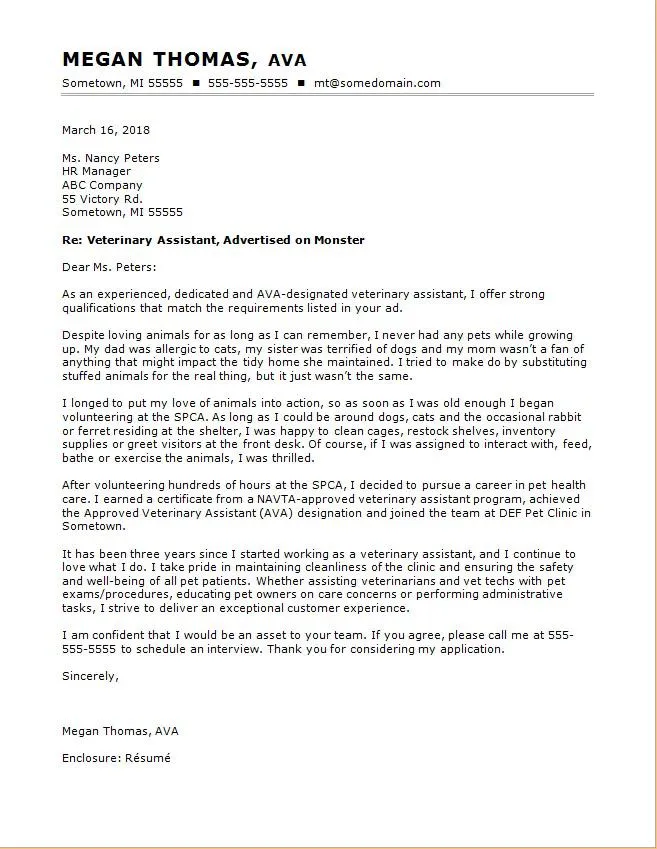
The formatting and presentation of your cover letter play a critical role in making a positive impression. Use a professional and easy-to-read font, such as Times New Roman, Arial, or Calibri, with a font size between 10 and 12 points. Maintain consistent formatting throughout the document. Use appropriate spacing and margins to make the letter visually appealing. The letter should be a single page in length. Proofreading is essential. Carefully review your cover letter for any grammatical errors, spelling mistakes, or typos. Ask a friend or family member to proofread the letter for you. Ensure that you are following the guidelines for your cover letter.
Formatting your Cover Letter
Formatting your cover letter properly is crucial for readability and professionalism. Use standard business letter format. Include your contact information at the top left, followed by the date and the recipient’s contact information. Use single spacing within paragraphs and double spacing between paragraphs. Left-align your text. Use a clear and readable font, such as Arial or Times New Roman, in a size between 10 and 12 points. Avoid using excessive formatting or special effects. Make sure the letter is visually balanced and easy to scan.
Proofreading and Editing
Thorough proofreading and editing are non-negotiable steps in creating a strong cover letter. Before submitting your cover letter, read it carefully several times. Check for any grammatical errors, spelling mistakes, punctuation errors, and typos. Pay close attention to sentence structure and clarity. Ensure that your writing style is consistent and professional. Read the cover letter out loud to check for awkward phrasing or flow issues. Have a trusted friend or family member review your cover letter for feedback. Proofreading will make your cover letter shine.
Closing Your Cover Letter Effectively
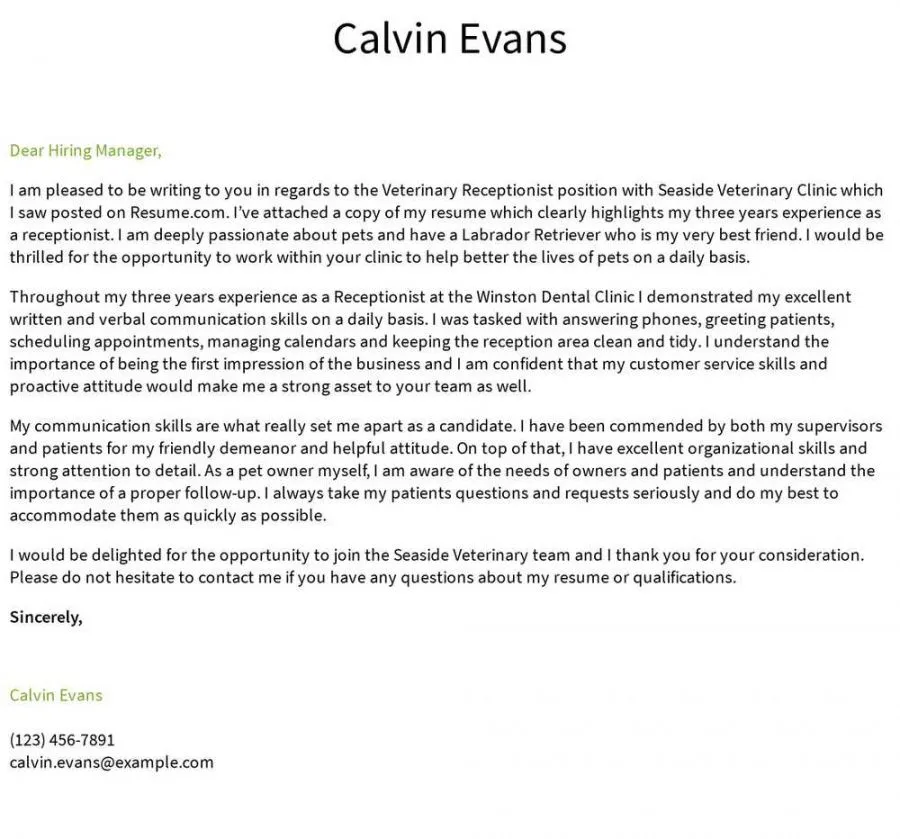
The closing of your cover letter should leave a lasting positive impression. Express your enthusiasm for the opportunity and reiterate your interest in the position. Thank the hiring manager for their time and consideration. Include a call to action, such as “I am eager to discuss my qualifications further” or “I look forward to hearing from you soon.” Use a professional closing, such as “Sincerely,” “Respectfully,” or “Best regards,” followed by your typed name. Make sure to sign the physical copy of the cover letter.
Expressing Gratitude and Call to Action
Always express your gratitude for the hiring manager’s time and consideration. A simple “Thank you for your time and for considering my application” is sufficient. Then, include a call to action that encourages the hiring manager to take the next step. For example, you could state, “I am available for an interview at your earliest convenience” or “I look forward to discussing my qualifications further.” Make sure you provide contact information in the closing and ensure they can contact you.
Cover Letter Examples for Vet Receptionists
Reviewing examples can provide valuable insights into structuring and writing a successful cover letter. Examples showcase different approaches depending on your experience level and the specific role. However, remember to tailor these examples to your own experience and the job requirements. Ensure the examples you find are up-to-date, relevant, and written in a professional tone. Use them as a guide and customize the content to create a cover letter.
Example 1: Entry-Level Vet Receptionist
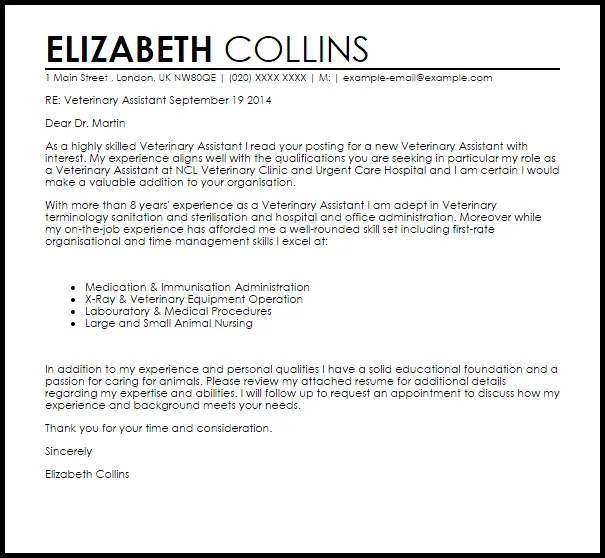
If you have limited experience, focus on transferable skills, relevant coursework, volunteer experience, and your passion for animals. Highlight your eagerness to learn and your strong work ethic. Mention any customer service experience, even if it’s not in a veterinary setting. Tailor the letter to the specific needs of the practice, emphasizing your willingness to assist in all receptionist duties. Show your enthusiasm, and indicate that you are ready to perform all that is required in a receptionist. Show how you are the perfect candidate for the job.
Example 2: Experienced Vet Receptionist
If you have experience, highlight your accomplishments and specific skills. Quantify your achievements whenever possible (e.g., “Successfully managed over 75 client calls daily”). Showcase your proficiency with practice management software, scheduling, and client communication. Describe specific situations where you have resolved complex client issues or improved office efficiency. Tailor your letter to showcase your specific skills and experience in the best way. Providing concrete examples of your accomplishments makes your cover letter shine.
Example 3: Career Change Cover Letter
If you are changing careers, focus on transferable skills that are relevant to the veterinary receptionist role. For example, customer service, communication, organizational skills, and attention to detail are highly valued. Explain why you are passionate about working with animals and why you have chosen this career path. Highlight any relevant experience, such as pet ownership, volunteering at animal shelters, or assisting with animal care. Provide a detailed explanation for your career change. Address how your new skills and experience transfer and would be beneficial in the new role.
Common Mistakes to Avoid in Your Cover Letter
Several common mistakes can undermine your cover letter and hinder your chances of getting an interview. Being aware of these pitfalls can help you create a more effective and compelling application. Avoiding these mistakes is crucial for making a strong impression. This ensures that you showcase your skills and enthusiasm for the position.
Grammar and Spelling Errors
Grammatical errors and spelling mistakes are major red flags for employers. They demonstrate a lack of attention to detail and can suggest a lack of professionalism. Always proofread your cover letter carefully. Use a spell checker and grammar checker, but don’t rely on them completely. Read your cover letter out loud to catch any awkward phrasing or errors. Ask a friend or family member to proofread your cover letter for you. Ensure that you read and re-read your cover letter to ensure that it is perfect.
Generic and Uninspired Content
Generic cover letters that could be used for any job application are likely to be rejected. Tailor each cover letter to the specific job posting and the veterinary practice. Avoid using clichés and generic phrases. Instead, use specific examples and highlight how your skills and experience align with the job requirements and the practice’s values. Customize each cover letter to the specific needs of the veterinary practice, and be sure to make each one unique.
Failing to Tailor Your Letter
Failing to tailor your cover letter to the specific job and practice is another common mistake. Take the time to research the veterinary practice and the job requirements. Highlight the skills and experiences that are most relevant to the position. Address the specific needs of the practice and how you can contribute to its success. Customizing your cover letter shows the employer that you are interested in their company. Don’t just send out the same letter to all potential employers; you must show that you are an ideal candidate.
Submitting Without Proofreading
Submitting your cover letter without proofreading is a significant mistake. It shows a lack of attention to detail and can damage your credibility. Always proofread your cover letter carefully. Check for any grammatical errors, spelling mistakes, typos, and formatting issues. Read your cover letter out loud to catch any awkward phrasing or flow problems. Have a friend or family member review your letter for feedback. Be sure to proofread to show that you are serious and a great fit for the job. Proofreading is an essential part of the cover letter.
